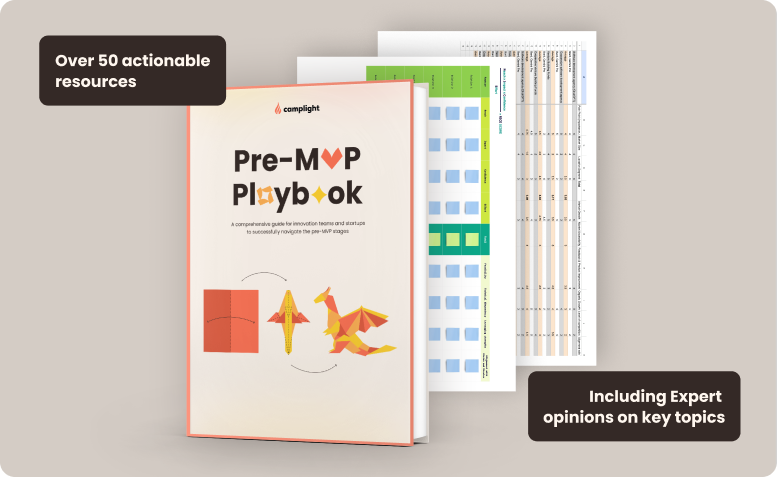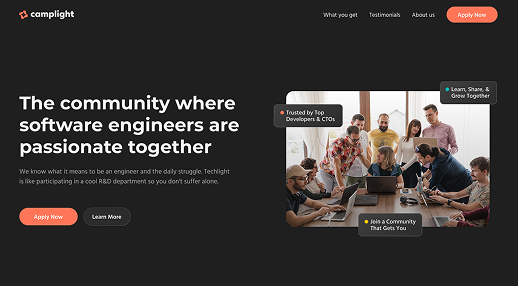The first time we got introduced to Daniel Ofman’s model was from Tuff Leadership Training. Ofman’s model is commonly used in coaching, team building, personal development, and leadership development. It helps individuals to understand their core qualities, pitfalls, challenges, and allergies which is key to developing a comprehensive understanding of oneself and others. At Camplight we also use it for assessing our company culture and team dynamics.
Core Quadrants of Your Company Culture
Core Qualities
The focus of Ofman’s model of the company culture starts with core qualities, defined as the specific strengths of a person that are intrinsic and natural to their character. Examples of these could be decisiveness, determination, reliability, creativity, sensitivity, and more. These qualities are inherent to an individual and contribute to their uniqueness.
Pitfalls
However, every strength could double as a weakness when it’s overly manifested. Ofman referred to these as ‘pitfalls’. For example, a person with a core quality of decisiveness might become impulsive when this quality is overused or misused. It’s essential to note that a pitfall is not a negative trait, but an exaggeration of a core quality.
Challenges
‘Challenges’, in Ofman’s context, are the positive traits that can counterbalance the pitfalls. These are not inherent qualities of an individual but can be developed over time to complement their core quality and avoid falling into pitfalls. Taking the previous example, if a decisive person’s challenge is to be patient, cultivating this trait can help balance their impulsive tendencies.
Allergies
Lastly, Ofman’s model of the company culture illustrates ‘allergies’, which represent our intense aversions. Typically, an individual’s allergy is the exaggeration of their challenge by others. For instance, if a person’s challenge is patience, their allergy might be passivity or indecisiveness in others. Understanding one’s allergies can provide insight into their challenges.
The Interplay
To try creating a company coulture for yourself you can use this Miro template we published on Miroverse.
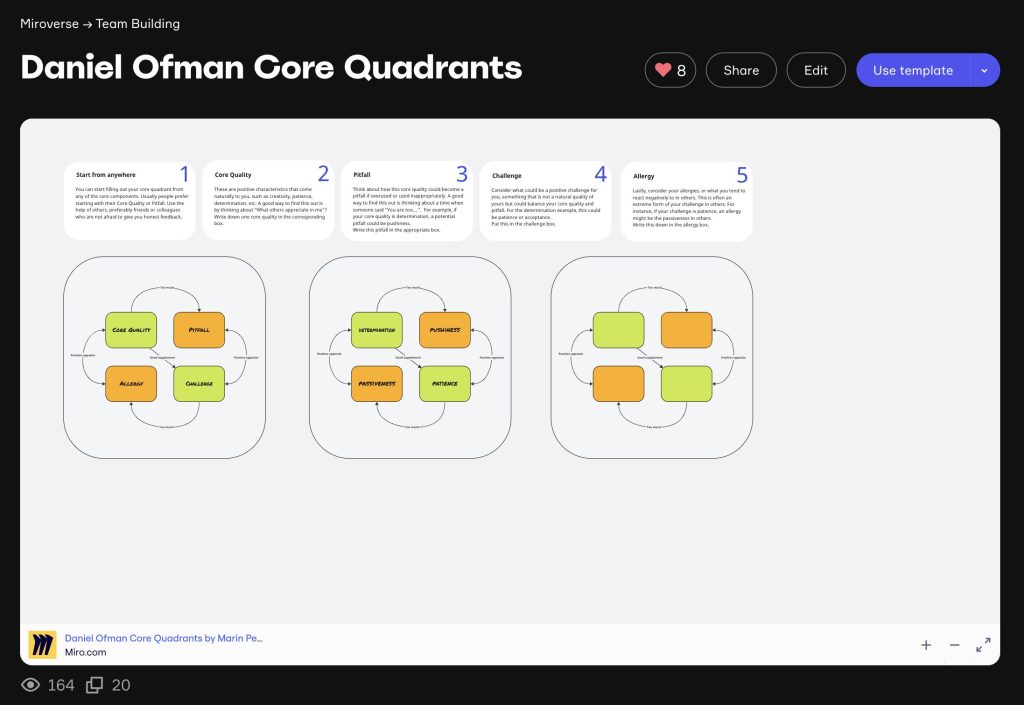
Here’s how to use it:
Core Quality: You can start from anywhere, but usually people prefer to start by identifying their core quality. This is your inherent strength. It’s best if you ask your colleagues or close friends for input as sometimes we can be blind about our strengths.
Pitfall: The exaggerated form of your core quality becomes your pitfall. Think about a time someone said to you “You are too…” what word did they use? If your core quality is “determination”, maybe they described you as “too pushy” or “stubborn” which is an exaggeration of your core quality.
Challenge: Your challenge is the positive trait that counterbalances your pitfall. For example “patience” can be a nice balance for your determination.
Allergy: The exaggerated form of your challenge becomes your allergy.
By using this model, you can foster self-awareness and personal growth, and maximize your strengths while recognizing and working on areas that need improvement.
Visualizing Team Dynamics
Apart from the usual way this model is used, we also started exploring it in terms of team dynamics and company culture. Something we noticed was that we could create these maps for all our teams and see how the interplay between team members works.
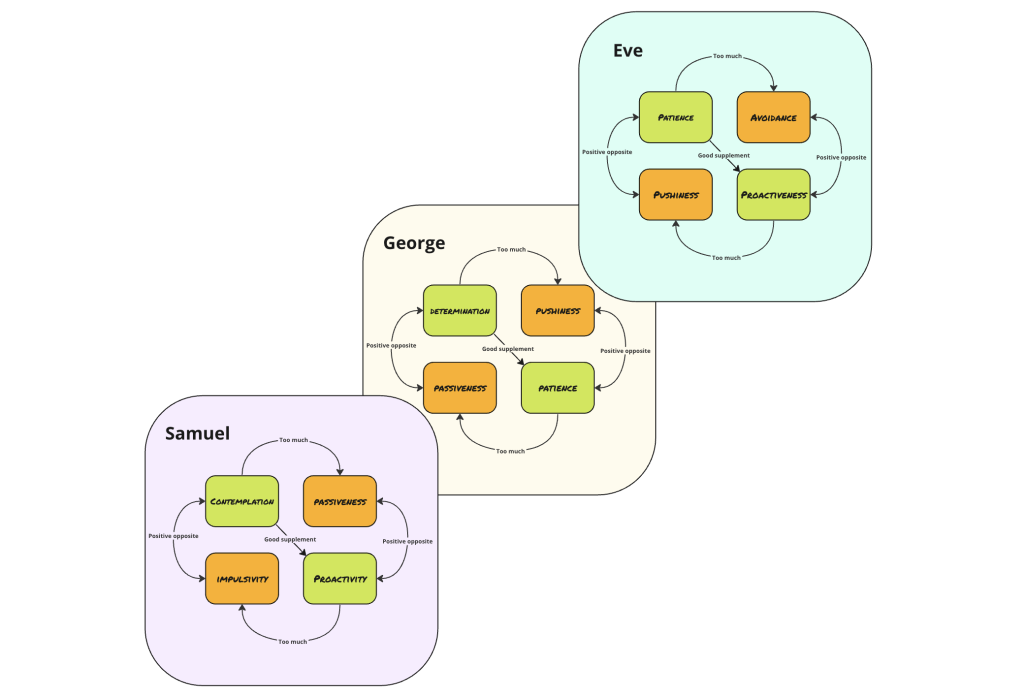
Here is one such map. You can notice how George’s pitfall – Pushiness is Eve’s Allergy. It is pretty obvious that when George becomes “too determined” it can trigger people like “Eve”. On the other hand, poor George might have some issues with Samuel, whose pitfall is “Passiveness” which is also George’s allergy.
Visualizing Company Values
The same process can be applied at your company values level to check which processes in your company might trigger some allergic reactions. Let’s look at Camplight’s values for example. One of our core values is Transparency. This creates the following quadrant:
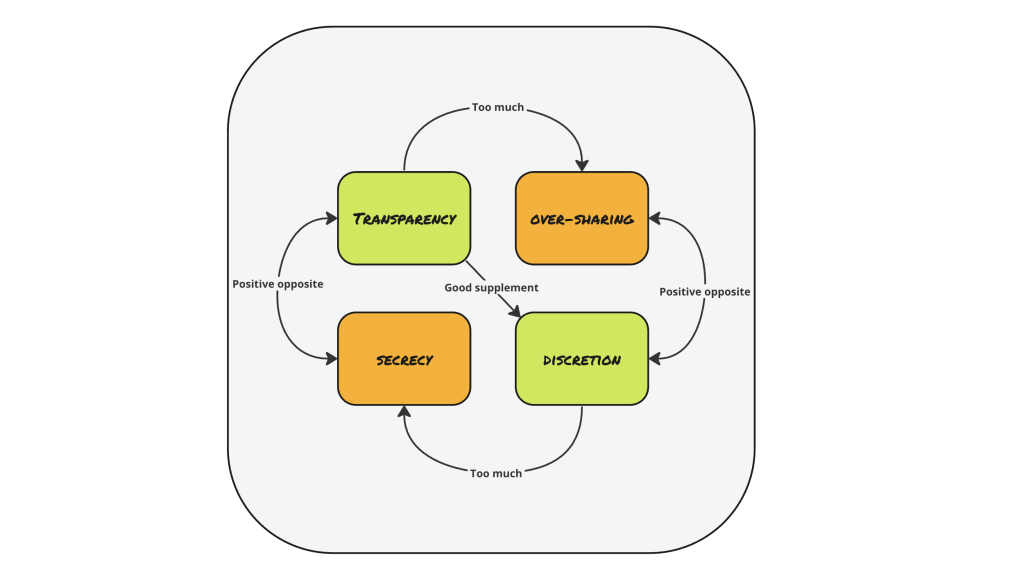
This means that most people in the company, or the company as a whole might find it challenging to be discrete in certain situations or outright allergic to “secrecy”. Why is that helpful? Well, we often talk about how important it is for a company to be clear about its values. This framework makes it even more obvious that all values also have a shadow side and we have to be absolutely clear that we will prefer transparency over secrecy even in times when this might trigger people. It is easy to say we value something. It is much harder to live by it.
